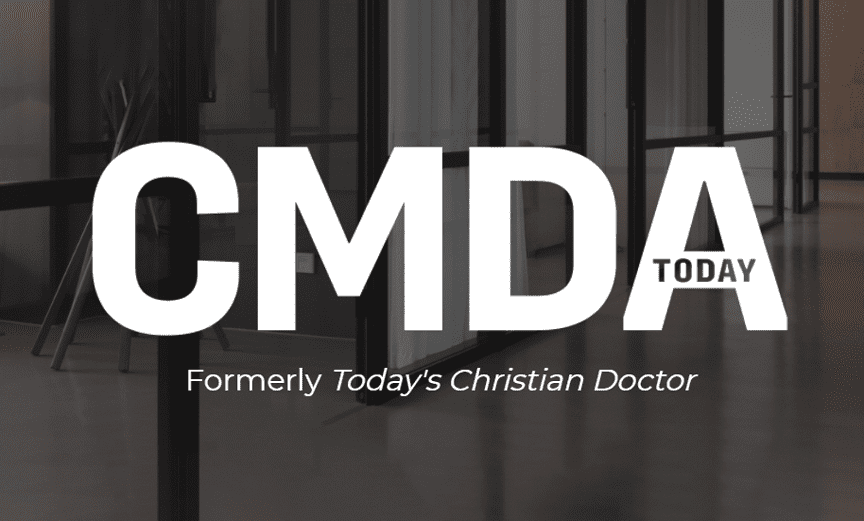Jeffrey J. Barrows, DO, MA (Ethics)
What You Need to Know
In June 2022, the U.S. Supreme Court finally corrected the debacle of the Roe v. Wade decision, ending 49 years of federal judicial fiat allowing legal abortion in all 50 states. One prominent leader has appropriately called for a jubilee celebration, recalling the 50-year festivity found in the Old Testament. As healthcare professionals, it’s important to understand a brief overview of the legal changes brought about by the Roe decision in 1973 and how the recent Dobbs v. Jackson Women’s Health Organization reversal will affect the legal landscape regarding abortion today. Moreover, we need to be prepared to address copious misunderstandings surrounding the Dobbs decision.
By the end of 1972, just prior to the Roe v. Wade U.S. Supreme Court decision, abortion was essentially illegal in 30 states and legal under certain circumstances in 20 states.[1] However, in its January 1973 Roe decision, the Supreme Court took the power to regulate abortion away from individual states, making it legal across the U.S. throughout the first two trimesters. This decision allowed medical regulations to abortion within the second trimester as long as they were “reasonably related to maternal health.”[2] The Court based its decision on a right to privacy the majority believed existed mainly in the Fourteenth Amendment, even though the words privacy and abortion do not appear in the amendment. Two of the nine justices dissented from the opinion, including Justice Byron White, who wrote in his dissent that the decision represented the “exercise of raw judicial power.”[3]
In 1992, the Supreme Court revisited the issue of abortion regulation in the landmark case of Casey v. Planned Parenthood. The Court upheld the legality of abortion through the legal doctrine of stare decisis, Latin for “let the decision stand.” However, the Court further muddied the waters of abortion regulation by allowing states to adopt certain restrictions on abortion if those restrictions did not impose an “undue burden” on a woman’s right to have an abortion. The Casey Court failed to define “undue burden,” spawning continued abortion litigation for the next three decades.
In 2018, the state of Mississippi passed a law banning abortion after 15 weeks gestation, challenging the legality of abortion under the Roe and Casey decisions. The law never went into effect because the sole abortion provider in Mississippi, Jackson Women’s Health Organization, brought suit against the law, successfully persuading a federal court to block the enforcement of the law. Appeals to the initial decision took several years before the case finally landed at the Supreme Court as Dobbs v. Jackson Women’s Health Organization. Dr. Thomas Dobbs was the top state health officer at the time of the appeal, overseeing the regulation of the abortion clinic.
When the Supreme Court agreed to hear the Dobbs case, it agreed to answer the critical question of whether a state-legislated ban on abortion after 15 weeks gestation was allowed under the legal regime set up by Roe and Casey. However, if the Court decided to allow the ban to stand, it either needed to find a legal reason within the Roe/Casey argument to support its decision or completely overturn both rulings. In the Dobbs decision, released in June 2022 by a vote of 6-3, the Supreme Court held that Mississippi had the right to pass a 15-week ban on abortion. Addressing the legal basis for the decision, five of the justices decided to overturn both the Roe and Casey decisions completely. Chief Justice Roberts disagreed it was necessary, though he did not delineate a legal basis for his incremental approach in his dissent. Thus, the Dobbs decision overturned Roe and Casey by a vote of 5-4.
Within the majority opinion of the Dobbs decision, the justices noted Roe and Casey relied chiefly on the Due Process Clause of the Fourteenth Amendment as the basis to declare a right to privacy within the Constitution and thus a right to abortion.[4] This is also the basis for the often-repeated claim today of a “constitutional right” to abortion. The text of the Due Process Clause of the Fourteenth Amendment is: “…nor shall any State deprive any person of life, liberty, or property, without due process of law; nor deny to any person within its jurisdiction the equal protection of the laws.” Examination of the text of this clause reveals any “constitutional right” to abortion must be based upon interpretation and not in literal reading as with the constitutional right to freedom of religion and speech. The Dobbs decision notes that when the Fourteenth Amendment was adopted, “…three quarters of the States made abortion a crime at all stages of pregnancy.”[5]
Another misunderstanding of the Dobbs decision is that abortion is now illegal across the country. The Dobbs decision addresses this blatant falsehood: “The Constitution does not confer a right to abortion; Roe and Casey are overruled; and the authority to regulate abortion is returned to the people and their elected representatives.”[6] In other words, the power to regulate abortion now resides with either Congress or the legislatures of the 50 states and the ruling Council of the District of Columbia.
This monumental and authoritative decision does not jettison the responsibility of Christians to engage in the abortion issue. Instead, it increases the need for Christians to become involved in the fight against abortion on two levels, legislative and direct care.
While Congress can pass federal legislation for or against abortion, the current Congress is deadlocked on abortion because of the requirement for 60 votes in the Senate to overcome the filibuster. This can change with any election, and one party has been trying to pass the deceptively named “Women’s Health Protection Act.” This disastrous legislation would not only take the abortion question away from the states but also create a statutory right to abortion throughout pregnancy without any restrictions. Should this party ever achieve a 60-vote majority in the Senate while also maintaining control of the House of Representatives, this horrific legislation will likely become law, something we pray never happens.
Currently, both pro-abortion and pro-life legislation is being considered and passed within state legislatures. CMDA is working through our volunteer state directors and others to monitor and impact state legislation on abortion. Unfortunately, we need additional state directors in a number of states to help us in this battle. In addition, CMDA is seeking members willing to speak up for unborn life in the states considering pro-abortion legislation.
Finally, the pro-life movement has been unfairly criticized for its lack of compassion and practical assistance for women with unwanted pregnancies. This accusation is without merit, though it doesn’t mean we can’t step up and offer more. National movements to increase the medical and social assistance are available to pregnant women in need in our post-Roe culture. These movements especially need help from healthcare professionals, and CMDA can connect you to some of these networks. If you are interested in becoming engaged with our state advocacy efforts on abortion or would like to be connected to one of these movements, please contact [email protected].
We praise and thank the Lord for this recent judicial victory in the Dobbs decision, giving abortion regulation back to the people and their elected representatives. The pro-abortion forces are already engaged in making abortion legal throughout pregnancy in as many states as possible. Will you stand up and be part of the effort to make abortion not only illegal in this country but also unthinkable?
About the Author
Jeffrey J. Barrows, DO, MA (Ethics), serves as Senior Vice President of Bioethics and Public Policy for CMDA. Dr. Barrows is an OB/Gyn, author, educator, medical ethicist and speaker. He completed his medical degree at the Des Moines College of Osteopathic Medicine and Surgery in 1978 and his residency training in OB/Gyn at Doctors Hospital in Columbus, Ohio. In 2006, he completed a master’s in bioethics from Trinity International University in Chicago, Illinois. Dr. Barrows was called out of full-time practice in 1999, and he served as the director of CMDA’s Medical Education International (MEI) from 2002 to 2005 before transitioning into the fight against human trafficking. He dedicated 15 years of his career to fighting against human trafficking within the intersection of trafficking and healthcare, as well as the rehabilitation of survivors of child sex trafficking. In 2008, Dr. Barrows founded
Gracehaven, an organization assisting victims of domestic minor sex trafficking in Ohio. In addition, he is a founding board member of HEALTrafficking. He is the author of Finding Freedom, a novel that realistically portrays child sex trafficking in the U.S.
[1] Wikipedia. Abortion in the United States. (n.d.) Retrieved July 12, 2022 from https://en.wikipedia.org/wiki/Abortion_in_the_United_States.
[2] Roe v. Wade, 410 U.S. 113 (1973). https://www.law.cornell.edu/supremecourt/text/410/113.
[3] Roe v. Wade, 410 U.S. 113 (1973). https://www.law.cornell.edu/supremecourt/text/410/113.
[4] Dobbs v. Jackson 597 U.S. ___ (2022). https://www.supremecourt.gov/opinions/21pdf/19-1392_6j37.pdf.
[5] Dobbs v. Jackson 597 U.S. ___ (2022). https://www.supremecourt.gov/opinions/21pdf/19-1392_6j37.pdf.
[6] Dobbs v. Jackson 597 U.S. ___ (2022). https://www.supremecourt.gov/opinions/21pdf/19-1392_6j37.pdf.




